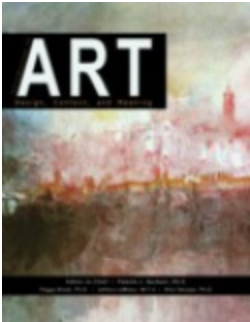
Art Appreciation
The comprehensive contents from this book, combined with Odigia’s Teaching and Learning Tools have everything you need to engage, collaborate, track and assess your students.
This course includes:

practice questions
Helping Teachers Do What They Do Best: Teach

Customize
Use our courses as is or easily customize them to fit your teaching style and the needs of your students. You can add your favorite resources, hide and show our existing content and pre-built assessments, or make them your own. Everything your students need, in one place!

Engage and Collaborate
Odigia combines learning materials, discussions, and tools to create a familiar social experience for students allowing you to easily connect and redirect students attention.

Track
See how much time students are spending on different areas of the course, which areas are creating the most amount of engagement and identify topics the students are struggling with. Flag and provide feedback on assignments to proactively meet individual students' needs.

Assess
Game theory allows students to monitor their progress visually and motivates them to stay on track. Students can see exactly what activities they need to complete, which ones have been flagged and compare their progress against the overall class.
Art Appreciation Course Outline
What is Art?
The Structure of Art
- Introduction
- Art Specific Vocabulary
- Art Forms: Two – Dimensional Art
- Art Forms: Three – Dimensional Art
- Art Forms: Four – Dimensional Art
- Elements of Design: Form and Composition
- Elements of Design: Principles of Design
- Before you Move on
Significance of Materials Used in Art
- Introduction
- Utility and Value of Materials
- Precious Materials, Spolia, and Borrowed Glory
- Liquidation of Treasures
- Wood, Inlay, and Lacquer
- Intrinsic Values and Enhanced Worth of Metals
- Rare Materials and Prohibited Uses
- Material Connotations of Class or Station
- Before you Move on
Describing Art
- Introduction
- Formal or Critical Analysis
- Types of Art
- Styles of Art: Cultural Style
- Styles of Art: Stylistic Periods or Movements
- Styles of Art: Individual Style
- Before you Move On
Meaning in Art
- Introduction
- Historical Context
- Social Context
- Personal or Creative Narrative Context
- Political Context
- Scientific Context
- Changes in Meaning of Symbols and Iconography
- Symbolism, Iconography, and Visual Literacy
- Symbolism and Iconography in Mythology and Storytelling
- Exploring Symbolic and Iconographic Motifs
- Before you Move On
Connecting Art to Our Lives
- Introduction
- Aesthetics
- Expression (Philosophical, Political Religious, Personal)
- Unification/Exclusion
- Communication
- Protest and Shock
- Celebration and Commemoration
- Worship
- Information, Education, and Inspiration
- Before you Move On
Form in Architecture
- Introduction
- Residential Needs
- Community and Government
- Commerce
- Worship
- Before you Move On
Art and Identity
- Introduction
- Individual vs Cultural Groups
- Nation
- Cultural Heritage and Ethnic Identity
- Sex/Gender Identity
- Class
- Group Affiliation & Personal Identity
- Before you Move On
Art and Power
- Introduction
- Propaganda, Persuasion, Politics, and Power
- Imagery of War: Historical/Documentary
- Imagery of War: Reflective/Reactionary and Anti-War
- Prohibition or Destruction of Imagery: Iconoclast
- Before you Move On
Art and Ritual Life
- Introduction
- Exterior Ritual Spaces
- The Sacred Interior
- Masks and Ritual Behavior
- Funerary Spaces and Grave Goods
- Before you Move On
Art and Ethics
- Introduction
- Ethical Consideration in Making and Using Art
- Censorship
- Ethical Considerations in Collecting and Display of Art
- Before you Move On
About the book
Introduction to Art: Design, Context, and Meaning

Introduction to Art: Design, Context, and Meaning combines the best elements of both a traditional textbook and a reader, it introduces such issues in art as its meaning and purpose; its structure, material, and form; and its diverse effects on our lives. Its digital nature allows students to follow links to applicable sources and videos, expanding the students’ educational experiences beyond the textbook.
About the authors:
Senior Contributing Authors
Pamela Sachant
Peggy Blood
Jeffery LeMieux
Rita Tekippe
